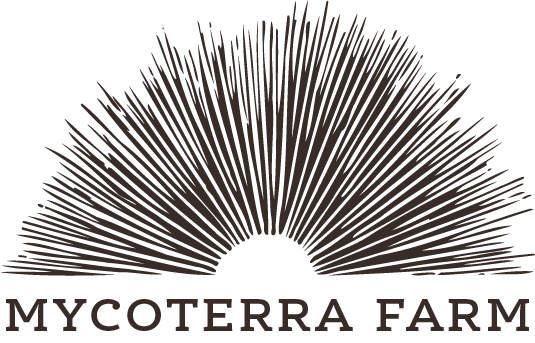Combine 1/2 pound (2 pints) Lion’s Mane Mushroom, 2 tbsp Extra Virgin Olive Oil, 2 whole cloves garlic, 1/4 tsp. each salt and pepper. Roast @ 350F for 30-40 minutes, stirring every 10 minutes until garlic cloves are soft.Remove from oven and mix with: 2 tbsp. mayonnaise, 1/2 tsp. soy sauce, 1 c. bread crumbs, […]
Uncategorized
Mass Mushroom Fest 2019
MUSHROOM FEST 2019 September 14, from 10 to 4PM Hosted at Mycoterra Farm, 75 Stillwater Road, South Deerfield, MA 01373 MUSHROOMS WORKSHOPS BURGERS, OYSTER BAR, TEAS LOCAL ART ENTERTAINMENT & GAMES ID TABLE BEER TENT LIVE MUSIC Mycologists, mushroom enthusiasts, friends and family are invited to come together for a free, family friendly festival. Mycoterra […]
Oyster Mushroom – Pleurotus Ostreatus
Oyster Mushrooms are perhaps one of the most widely consumed mushrooms worldwide. Mycoterra Farm produces several different species of oyster mushrooms including Pearl Oyster, Pleurotus ostreatus; Blue Oyster Pleurotus ostreatus var. columbinus; Golden Oyster, Pleurotus citrinopileatus; Pink Oyster, Pleurotus salmoneo stramineus; Phoenix Oyster, Pleurotus pulmonarius. Our Oyster mushrooms are grown on hardwood sawdust supplemented with organic grains. Not […]
Nameko Mushroom – Pholiota Nameko
The Nameko mushroom, Pholiota Nameko, a cousin of the Chestnut mushroom, is well known in Japanese cuisine for its silky texture, thickening properties, and its subtle earthy flavor with fruity and nutty notes. For centuries it has been a staple of Japenese cusine accenting stir fries and miso soups. Native to the island and found […]
We love the Wayland Farmers Market! See you Wednesday!
The Wayland Summer Farmers’ Market takes place weekly on Wednesdays from noon to 5 PM, June 24 through October 7


